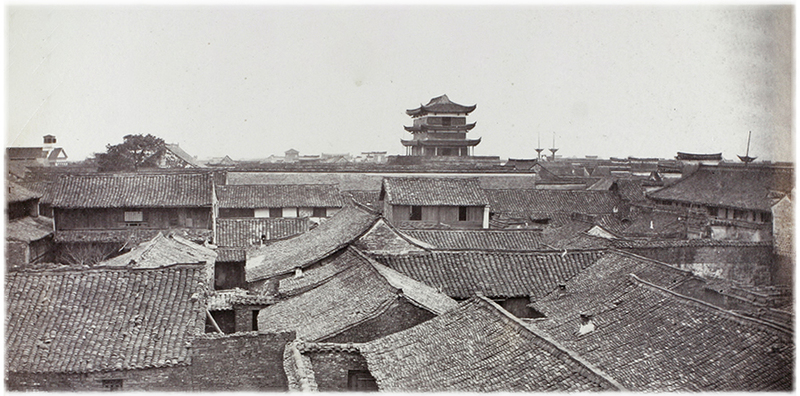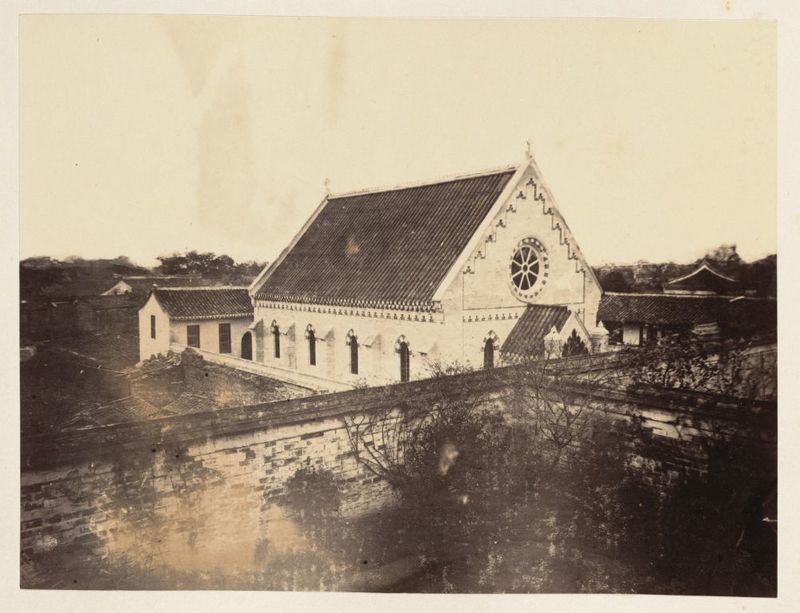Spiritual Practices

A view of Ningpo's rooftops, c. 1870. The structure in the top left-hand corner is one of the Presbyterian Mission church buildings.
In her letters, Maggie often references her love of praying and singing hymns. In a letter written in November 1850, she describes her practice of daily worship: “the clock will soon strike and then Samuel & I will read the Scriptures together and kneel once more to thank God for the many mercies and privaleges [sic] of the past day.”
Maggie became familiar with the Bible as a child, and she references several of its passages in her letters. She writes that God, “the kind and gracious giver of all good . . . deliver[ed] us from dangers seen and unseen. I wish I could tell you all He has done for me, but it would require too much time and space.” This statement echoes John 21:25: “There are also many other things which Jesus did, the which, if they should be written every one, I suppose that even the world itself could not contain the books that should be written.” Maggie also quotes Mark 16:15 when she writes that, as a result of seeing God’s provision, protection, and presence in their own lives, she and Samuel decided to follow their “Saviour’s command: ‘Go ye into all the world and preach the gospel to every creature.’”
The missionaries all learned Chinese so that they could communicate with the Chinese people, and the men, who rotated preaching duties at their weekly church services, were especially diligent in their studies. In Earthen Vessels and Transcendent Power: American Presbyterians in China, 1837-1952, G. Thompson Brown writes that the Chinese people were fascinated by the Christians’ public worship services, as they “had no custom of communal worship” (34). Ningpo had multiple Buddhist shrines and temples meant for individual rites, but the Christian emphasis on community was new to the city. Even though their actual church membership was small at the time, the Ningpo Presbyterian Mission quickly built three churches—the North Bank Chapel, the Hall of the Church of Jesus, and the Level Bridge Chapel—in order to “witness in a visible way to the religion of Christ” (Jubilee Papers, 21-22).
In his diary, Robert Hart describes a service he attended at one of the Presbyterian churches on October 22, 1854: “They commence by Prayer; then a Chapter is read; then they sing; then again prayer is made; then follows the sermon; after which a Hymn is sung, then the Benediction having been pronounced all separate. The singing I thought particularly good … The most pleasing feature in the singing is that all join most heartily in it.”




